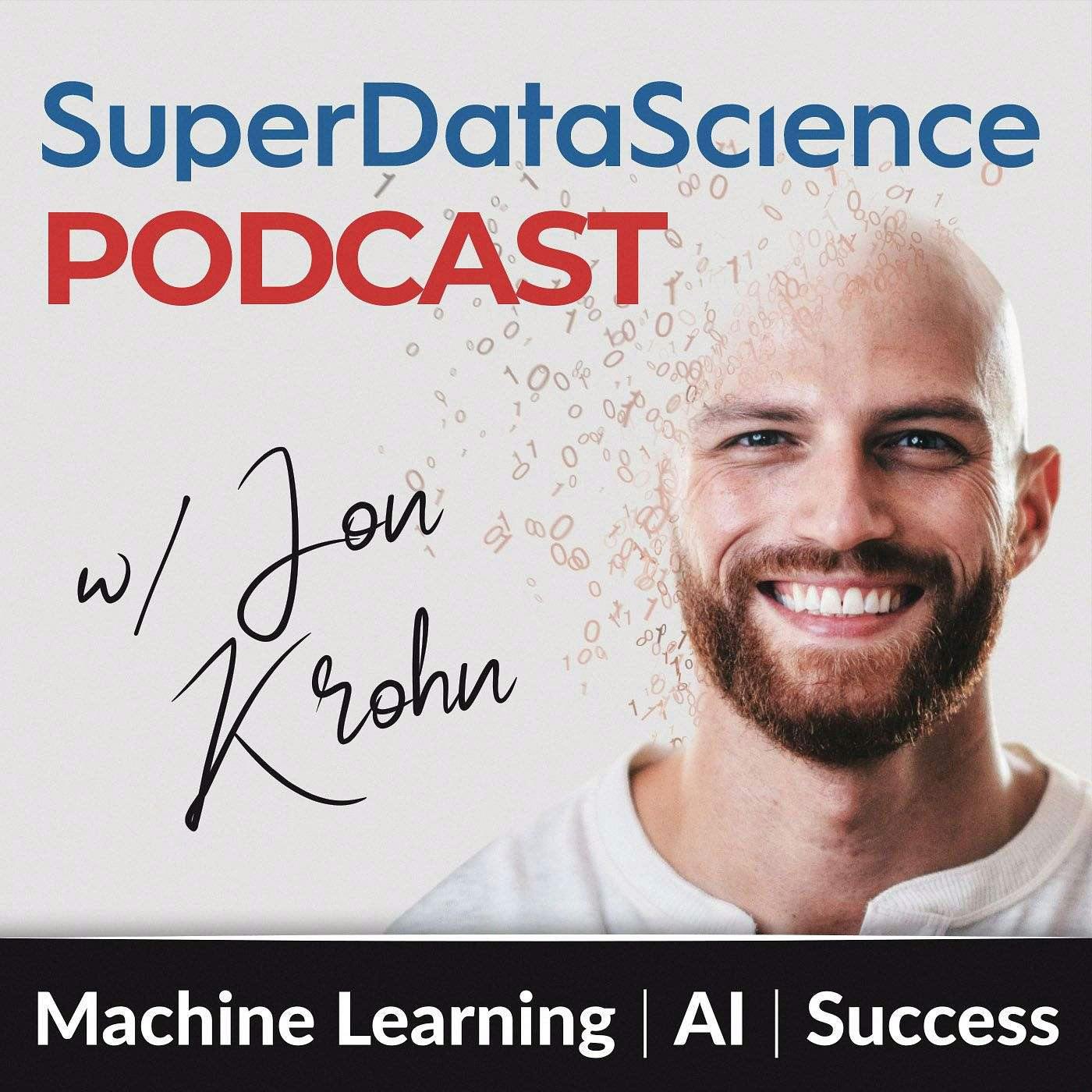
853: Generative AI for Business, with Kirill Eremenko and Hadelin de Ponteves

Super Data Science: ML & AI Podcast with Jon Krohn
Deep Dive
What are foundation models and how do they relate to large language models?
Foundation models are pre-trained AI models that serve as a base layer for building custom applications. They include large language models (LLMs) like ChatGPT, which are a subset of foundation models. Foundation models can also include models for images, videos, and other modalities. They are called 'foundation' because they provide a pre-trained base that businesses can customize for specific use cases, similar to how a basic cake layer can be customized with different toppings.
What are the eight steps in the foundation model lifecycle?
The foundation model lifecycle consists of eight steps: 1) Data preparation and selection, 2) Model selection and architecture, 3) Pre-training, 4) Fine-tuning, 5) Evaluation, 6) Deployment, 7) Monitoring and feedback, and 8) Iteration and maintenance. The first three steps (data prep, model selection, and pre-training) are typically handled by large organizations, while businesses focus on fine-tuning, evaluation, deployment, monitoring, and maintenance to customize the model for their specific needs.
What are the 12 key factors to consider when selecting a foundation model?
The 12 key factors for selecting a foundation model are: 1) Cost, 2) Modality (text, image, video, etc.), 3) Customization options, 4) Inference options (real-time, batch, etc.), 5) Latency, 6) Architecture, 7) Performance benchmarks, 8) Language support, 9) Size and complexity, 10) Ability to scale, 11) Compliance and licensing agreements, and 12) Environmental impact. These factors help businesses choose the right model for their specific use case and requirements.
What are some methods to customize foundation models during training?
Customization during training can be done through methods like domain-specific fine-tuning (narrowing the model's focus to a specific industry or dataset), instruction-based fine-tuning (training the model to respond in a specific way), and reinforcement learning from human feedback (RLHF), where humans evaluate and provide feedback on the model's responses. These methods allow businesses to tailor foundation models to their specific needs without having to pre-train a model from scratch.
What is retrieval augmented generation (RAG) and how does it work?
Retrieval augmented generation (RAG) is a method to enhance foundation models during inference by allowing them to pull information from external data stores, such as documents or databases, to augment their responses. The data is stored in a vector database, enabling the model to quickly retrieve relevant information and integrate it into its responses. This is particularly useful for applications like customer support or internal knowledge bases, where the model can dynamically access and use organizational data.
What are the three main AWS services for generative AI?
AWS offers three main services for generative AI: 1) Amazon Q, a high-level, plug-and-play solution for businesses; 2) Amazon Bedrock, a mid-level service that provides access to foundation models and allows for customization; and 3) SageMaker, a low-level, granular control option for technical implementations, offering tools for building, training, and deploying machine learning models, including generative AI.
What is the role of agents in modifying foundation models during inference?
Agents, or agentic AI, involve breaking down complex tasks into logical steps that can be performed by one or several foundation models. This approach allows simpler models to perform tasks more effectively by handling them step-by-step, rather than relying on a single, more complex model. It is a cost-effective way to enhance the capabilities of foundation models during inference, making them more versatile and efficient for specific workflows.
What is the significance of temperature in inference parameters for foundation models?
Temperature is an inference parameter that controls the variability and creativity of a foundation model's responses. A higher temperature results in more diverse and creative outputs, while a lower temperature produces more deterministic and predictable responses. For example, setting the temperature to zero ensures the model always provides the same response, while increasing it allows for more varied and imaginative answers.
- Foundation models are pre-trained AI models that serve as a base for custom applications.
- Large language models are a subset of foundation models.
- Foundation models can be used for text, image, and video data.
Shownotes Transcript
Kirill Eremenko and Hadelin de Ponteves, AI educators whose courses have been taken by over 3 Million students, sit down with Jon Krohn to talk about how foundation models are transforming businesses. From real-world examples to clever customization techniques and powerful AWS tools, they cover it all.
bravotech.ai) - Partner with Kirill & Hadelin for GenAI implementation and training in your business. Mention the “SDS Podcast” in your inquiry to start with 3 complimentary hours of consulting.
This episode is brought to you by ODSC), the Open Data Science Conference. Interested in sponsoring a SuperDataScience Podcast episode? Email [email protected]) for sponsorship information.
In this episode you will learn:
(07:00) What are foundation models?
(15:45) Overview of the foundation model lifecycle: 8 main steps.
(29:11) Criteria for selecting the right foundation model for business use.
(41:35) Exploring methods to customize foundation models.
(53:04) Techniques to modify foundation models during deployment or inference.
(01:11:00) Introduction to AWS generative AI tools like Amazon Q, Bedrock, and SageMaker.
Additional materials: www.superdatascience.com/853)